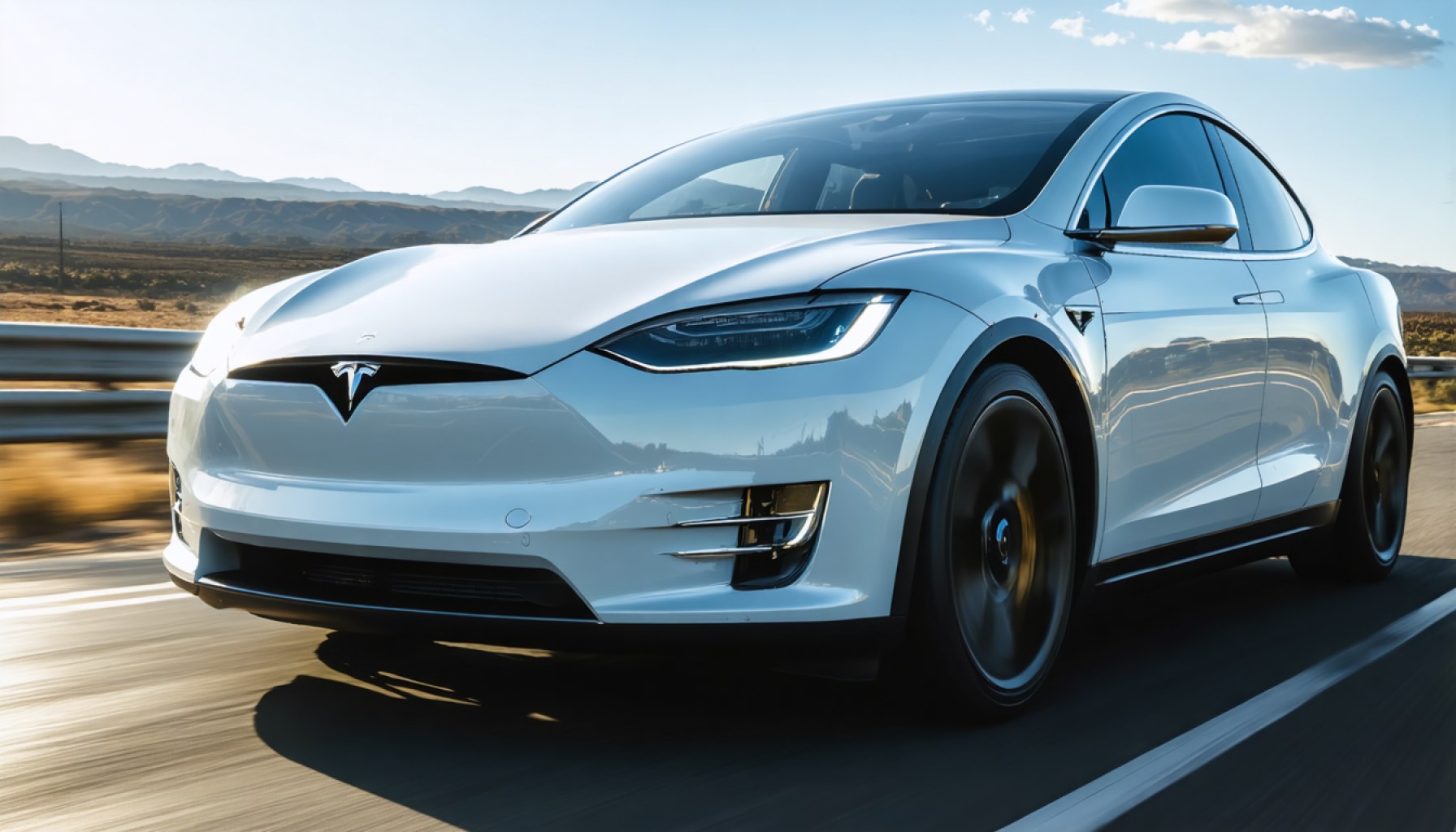- Tesla reported a significant drop in quarterly deliveries to 336,000 vehicles in Q1, marking the largest slump since early 2022.
- The disappointing delivery numbers led to a 2% dip in Tesla’s stock price, raising concerns among investors and analysts.
- Analysts suggest that Tesla faces systemic challenges, including regulatory changes, economic uncertainties, and increasing competition.
- There is potential for downward revisions of Tesla’s yearly forecasts, indicating possible future difficulties.
- To overcome these hurdles, Tesla’s leadership, particularly Elon Musk, must refocus on strategic innovation and resilience.
- The market is closely monitoring Tesla’s ability to address these challenges and maintain its status in the electric vehicle industry.
The electric hum of Tesla’s operations experienced a sudden stall as the latest delivery numbers rolled in, offering a jolt to investors and analysts alike. Tesla, the beacon of electric vehicles, reported a significant stumble in their quarterly delivery figures—just 336,000 cars made it to customers’ hands in Q1. This is a striking departure from the company’s previous robust performances, marking the most significant slump since the start of 2022.
The market responded with swift retribution as Tesla’s stock price dipped by 2% during morning trading on Wednesday. Disappointment oozed across the financial world, with key analysts weighing in on what this could mean for the EV titan’s future. Dan Ives of Wedbush lamented the performance as a broad-scale debacle, echoing a sentiment felt across Wall Street. There was no sugarcoating—Tesla’s report card was filled with red ink and underlines.
The hope that March would deliver a silver lining of robust sales failed to materialize, with U.S. sales falling flat despite expectations of a last-minute surge before impending tariffs. This absence of a rally left many, including RBC’s Tom Narayan, querying Tesla’s strategic navigations amid a choppy economic climate and growing competitive pressures.
Hargreaves Lansdown’s Matt Britzman piled onto the criticism, noting the depth of disappointment. The once unassailable march toward industry dominance now faces a barrage of hurdles, from regulatory reshuffling to intensifying competition from legacy automotive giants and spry startups alike.
However, the heart of the concern extends beyond mere quarterly numbers. The delivery miss hints at deeper, systemic challenges Tesla must confront head-on. Analysts predict a downward revision of yearly forecasts, signaling the potential for a rocky ride ahead. Tesla’s journey forward hinges on recalibrating its strategy under the weight of these challenges and macroeconomic unpredictability.
Yet, beneath these cloudy skies, the beacon that is Elon Musk remains ever pivotal. His colorful leadership must now pivot from external distractions back to the core mission of steering Tesla through this turbulence. The road ahead demands a renewed focus and strategic savvy to whip wind back into the sails of this electric vehicle juggernaut.
The message is unequivocal: the world is watching Tesla closely. With great innovation comes great expectation—and the time has come for Tesla to prove that this setback is but a speed bump on the road to an electrified future. As competitors multiply and the economic landscape shifts, the measure of Tesla’s resilience will be in its ability to navigate these new challenges and reaffirm its place at the forefront of the automotive revolution.
Tesla’s Bumpy Road to Recovery: Navigating the Competitive Electric Vehicle Landscape
Tesla’s Latest Hurdle: Analyzing the Q1 Delivery Slip
Tesla’s unexpected Q1 delivery slump has rattled investors and analysts, prompting urgency in evaluating the EV giant’s strategic direction. Deliveries fell to 336,000 vehicles, marking a significant decline and raising critical questions about Tesla’s response to emerging market dynamics. Here’s a deep dive into the factors at play and what the future could hold for the iconic brand.
Understanding the Delivery Decline: Contributing Factors
1. Production and Supply Chain Challenges: Persistent global supply chain disruptions, including semiconductor shortages, have affected production schedules across the automotive industry. Tesla is not immune to these disruptions, which continue to hinder vehicle rollouts.
2. Competition Intensifies: Traditional automakers such as Ford and General Motors, alongside rising startups like Rivian and Lucid Motors, are rapidly expanding their EV offerings. Tesla’s previous market dominance is now challenged, compelling them to innovate even further to maintain leadership.
3. Regulatory Changes and Tariffs: Tesla faces evolving regulatory landscapes, especially in China and Europe, two critical markets. New tariffs and environmental guidelines can impact production costs and market access.
Market Forecast and Industry Trends
– Rising Electric Vehicle Demand: Despite the quarterly dip, the global electric vehicle market is projected to grow exponentially. According to BloombergNEF, EV sales are expected to comprise 58% of global passenger car sales by 2040.
– Innovation and Technology Advancements: Tesla’s continued focus on autonomous driving technology, battery advancements, and energy solutions will be pivotal in securing its industry position.
Strategic Recommendations for Tesla’s Recovery
1. Diversify Supply Chain: To mitigate disruptions, Tesla can invest in diversified sourcing strategies, including partnerships or acquisitions to ensure a stable supply of essential components.
2. Expand Manufacturing Capabilities: Increasing production capacity in strategic locations can help meet demand while reducing logistics and tariff challenges.
3. Leverage Brand Loyalty: Engaging with Tesla’s loyal customer base through enhanced service offerings and innovative marketing can bolster consumer confidence and stimulate demand.
Pros & Cons Overview
– Pros: Advanced technology lead, strong brand reputation, loyal customer base.
– Cons: Recent misses and fluctuations in stock price, intense competition, regulatory hurdles.
Quick Tips for Tesla Enthusiasts and Investors
– Stay Informed: Track market trends, Tesla’s quarterly updates, and competitor moves.
– Evaluate Investment Strategies: Consider long-term potential and risks before making investment decisions related to Tesla stock or the broader EV market.
By closely monitoring these strategies and industry trends, stakeholders can make informed decisions and support Tesla’s potential rebound in the volatile EV landscape.
Explore More on Electric Vehicles: Tesla
This comprehensive exploration into Tesla’s latest challenges and industry trends is designed to provide insights into their current trajectory and potential strategies moving forward. As the EV industry evolves, Tesla’s ability to adapt will determine its future successes.
